RoboND - Robotic Inference Project
This repository is for the Udacity RoboND Robotic Inference Project, classifying and detecting real world objects leveraging the NVIDIA DIGITS workflow for efficient experimentation with Deep learning networks such as AlexNet, GoogLeNet, and the DetectNet Architecture.
The first dataset involves the classification of two objects on a conveyor belt, as well as 'None' state. An example of the dataset is shown in Figure 1.
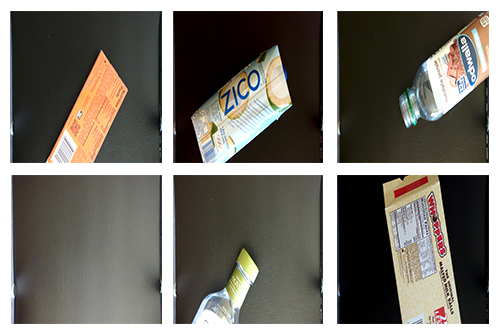 |
|---|
| Figure 1 : Sample dataset of Udacity supplied conveyor data |
Images for this data structure were organized like that shown below in order to successfully import the data into a DIGITS classification dataset.
P1_data/
├── Bottle/
│ ├── Bottle_1.png
│ └── Bottle_2.png
├── Candy_box/
│ ├── Candy_box_1.png
│ └── Candy_box_2.png
└── Nothing/
├── Nothing_1.png
└── Nothing_2.png
Evaluation of the dataset trained on a GoogLeNet network for 10 Epochs revealed an accuracy of 75.4%, and an inference time of ~5.3 ms.
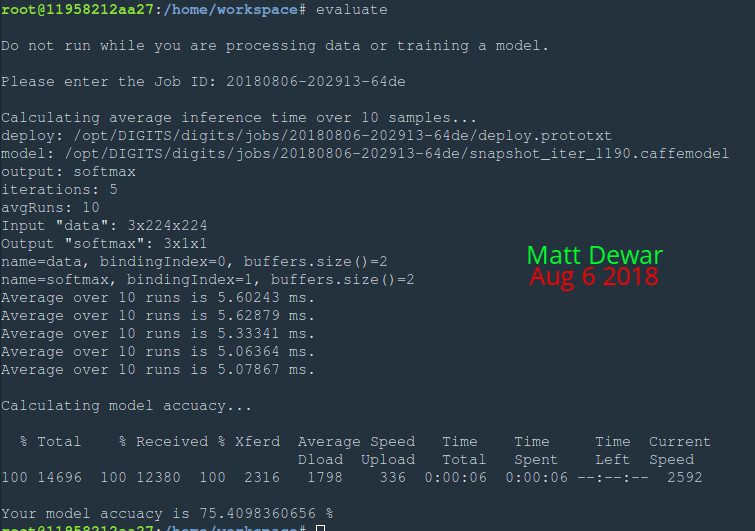 |
|---|
| Figure 2 : Evaluation of the GoogLeNet network on the conveyor products dataset |
The trained model can be found in ./DIGITS/P1-Test_Dataset of this repository.
The model trained with the conveyor belt test data was then applied to collected data from UniFi video cameras monitoring a workcell at a welding fabrication facility involving people and a robot.
Classification data was broken down as:
Workcell1/
├── Person/
│ ├── person00001.png
│ └── person00002.png
├── Person-Robot/
│ ├── person-robot00001.png
│ └── person-robot00002.png
└── Robot/
| ├── robot00001.png
| └── robot00002.png
└── None/
├── none00001.png
└── none00002.png
Examples of the training data are shown in Figure 3.
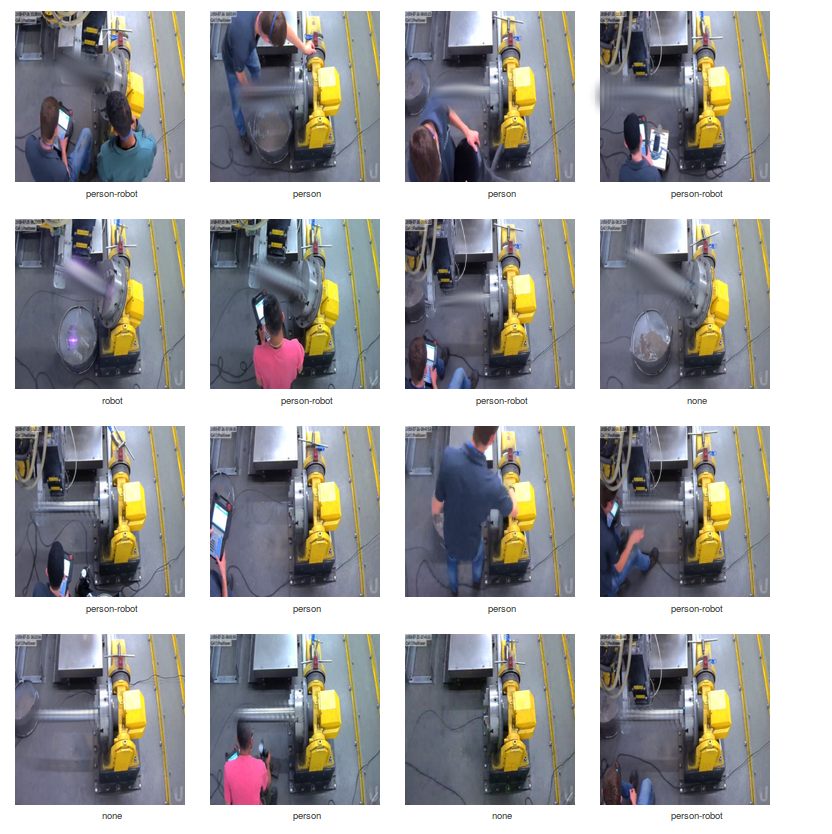 |
|---|
| Figure 3 : training data for workcell 1 |
The trained model for the above classification can be found in ./DIGITS/Workcell1-Classification/GoogLeNet-initial of this repository.
Figure 4 shows the loss and accuracy tensorboard plots of the training and validation data respectively.
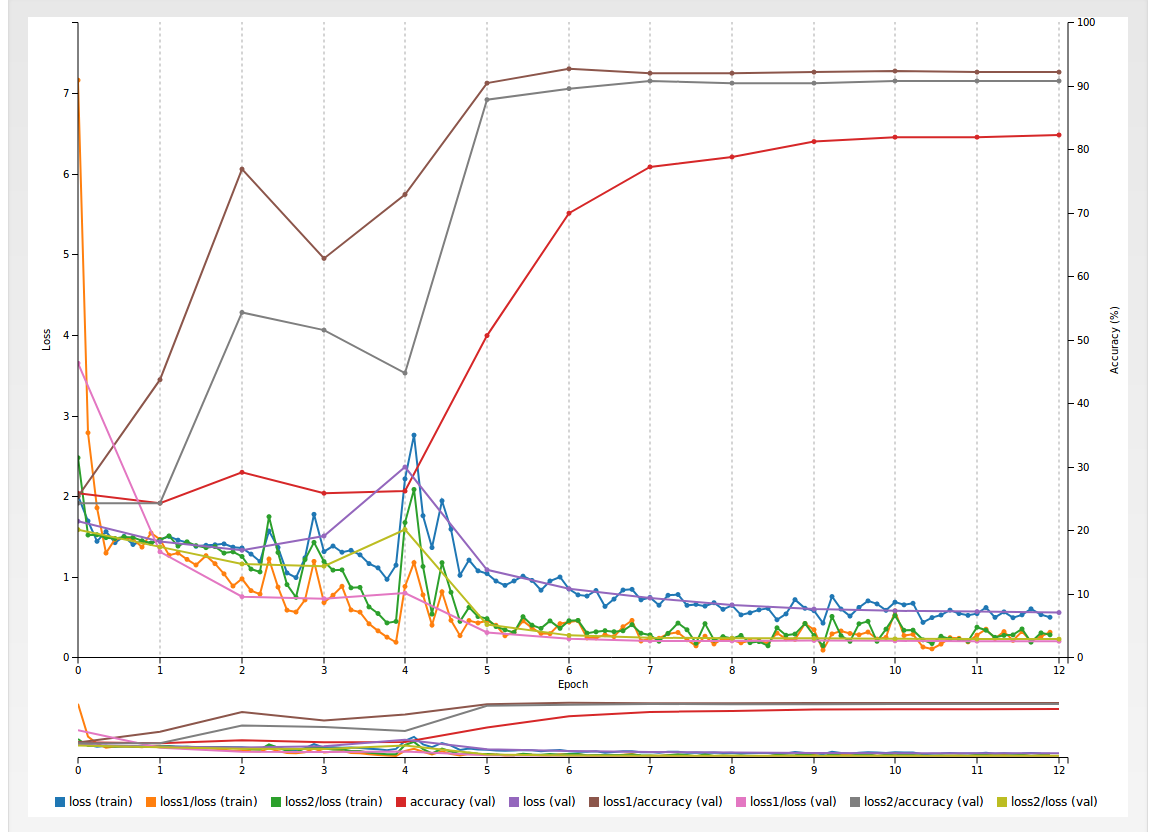 |
|---|
| Figure 4 : Loss and accuracy of training and validation data over 10 epochs using GoogLeNet |
This model was further improved by training for another 12 Epochs using the initial GoogLeNet model as the pretrained network.
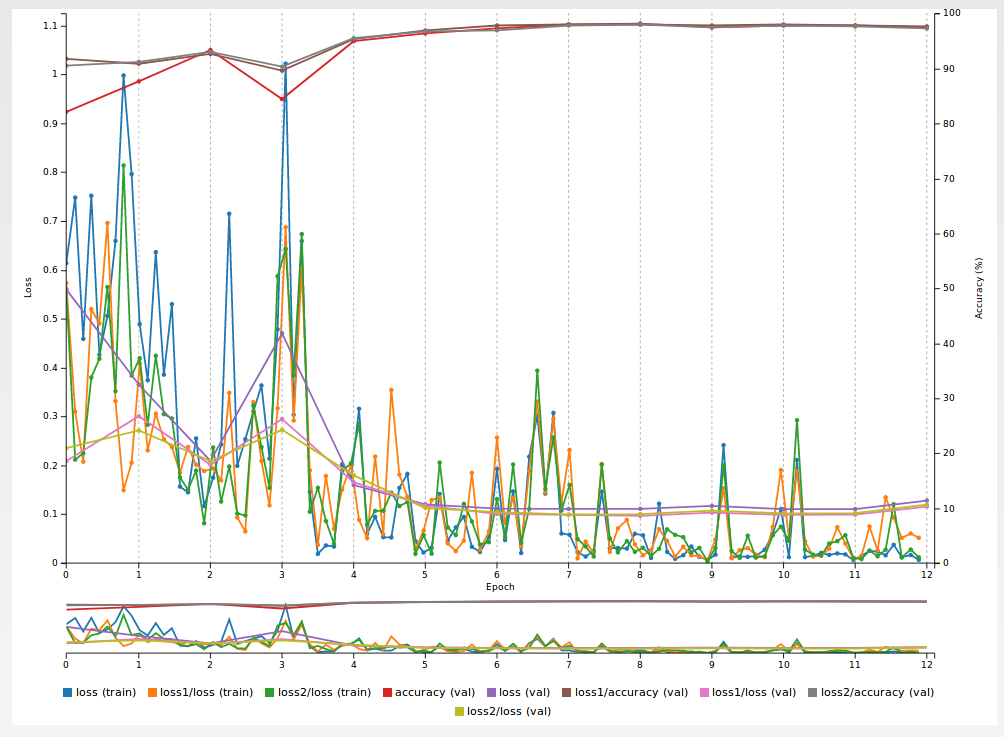 |
|---|
| Figure 5 : Loss and accuracy of training and validation data over 12 epochs using the pretrained model above. |
Lastly object detection was attempted on monitor cameras from another workcell, using the Labelbox platform for image annotation.
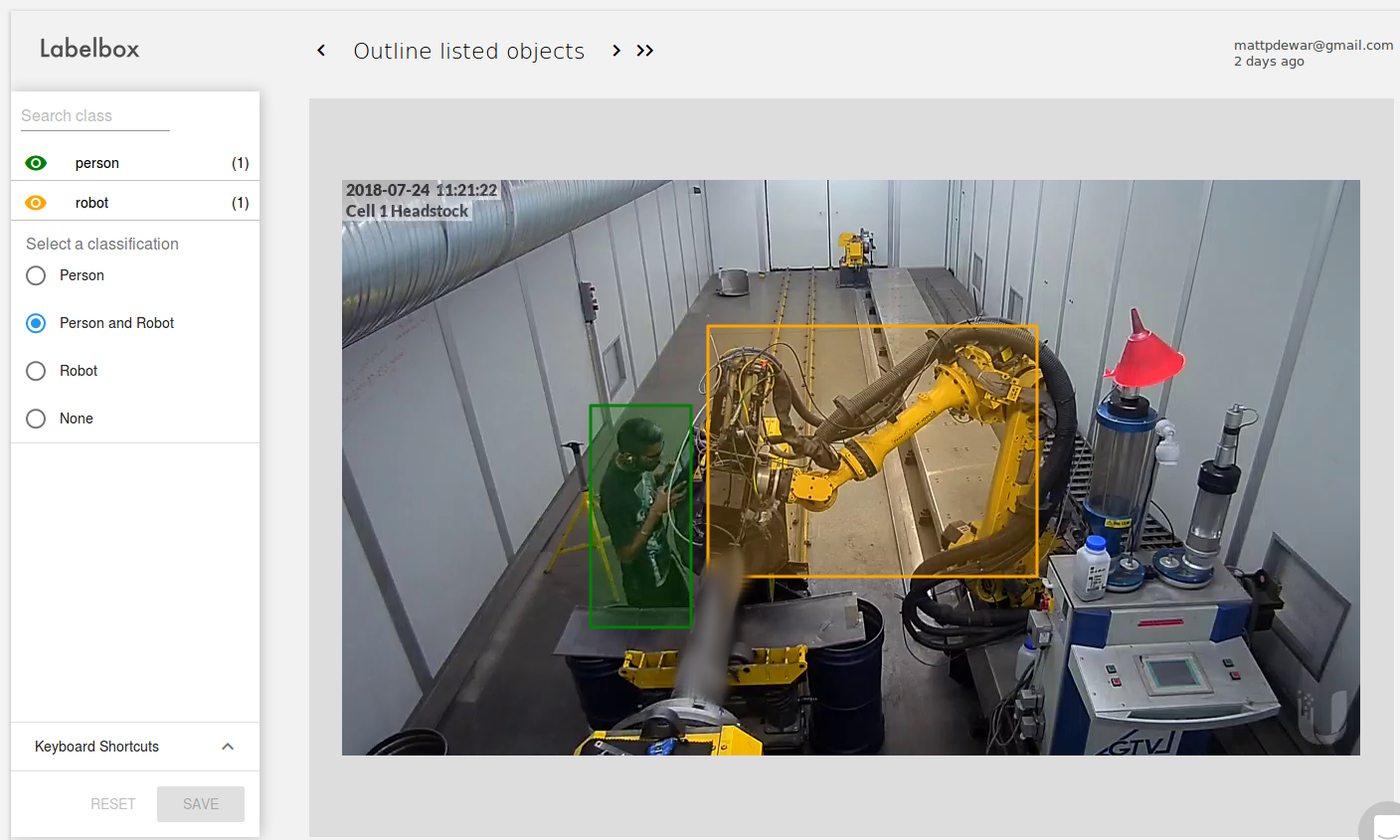 |
|---|
| Figure 6 : Image annotation for workcell 2 using Labelbox |
Image and annotation data was structured into the KITTI format (see ./labelbox/scripts):
train/
├── images/
│ └── Robot00001.png
│ └── Person00001.png
│ └── Person-Robot00001.png
└── labels/
└── Robot00001.txt
└── Person00001.txt
└── Person-Robot00001.txt
val/
├── images/
│ └── Robot00002.png
│ └── Person00002.png
│ └── Person-Robot00002.png
└── labels/
└── Robot00002.txt
└── Person00002.txt
└── Person-Robot00002.txt
Following the example guide, the detectnet.prototxt network was used for training and validation with a pretrained GoogLeNet model. The trained model snapshot can be found in ./DIGITS/Workcell2-Object_detection/model of this repository. The loss and accuracy tensorboard, Figure 7, show that the data could not be trained after 45 epochs. More on that can be found in the Report.pdf.
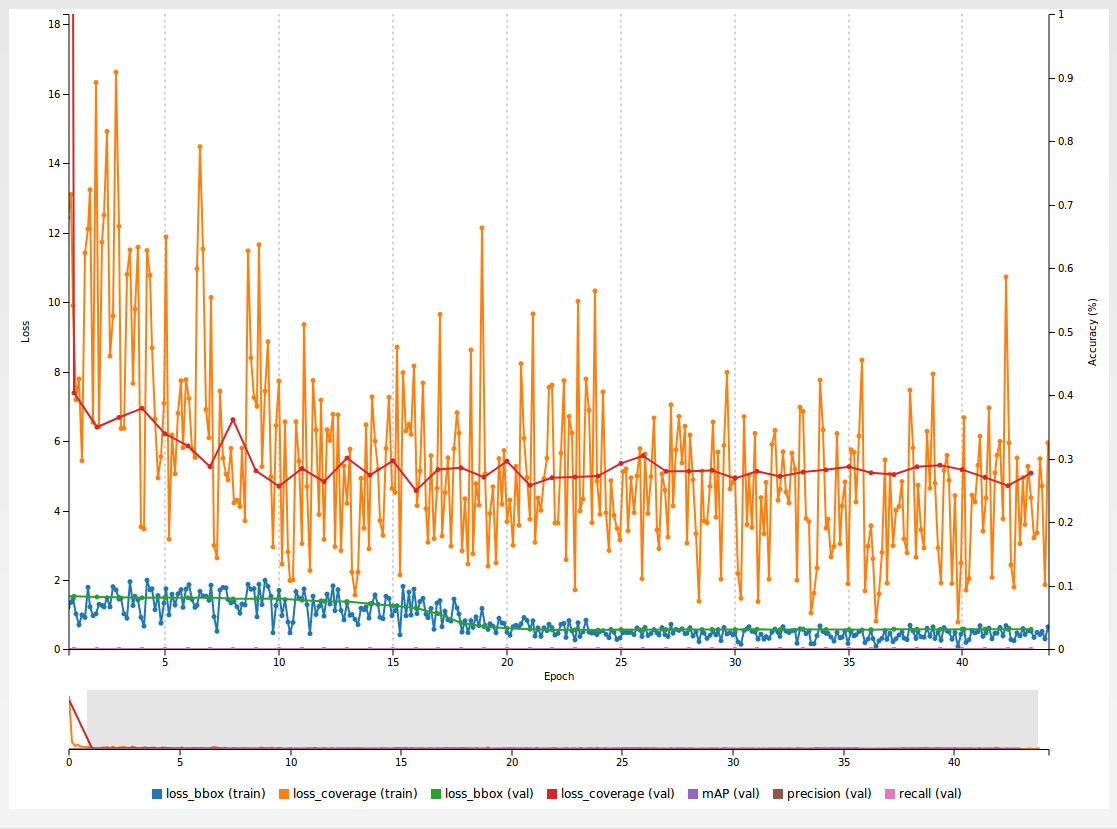 |
|---|
| Figure 7 : Loss and accuracy plot of the DetectNet model |